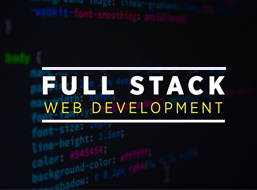Becoming a Professional Web Designer is one of the most rewarding career paths in today’s digital-first world. Every business, from startups to global brands, needs an engaging, functional website to grow.
If you are wondering how to become a web designer, the good news is that this career is open to anyone willing to learn, practice, and build creativity into code.
By enrolling in a Web Designing Training Course in Bangalore, you can gain both the technical and creative skills needed to step into this exciting profession.
But where do you start, and how do you grow from a beginner into a professional? Let’s walk through the complete roadmap.
Step 1: Understand the Role of a Web Designer
A professional web designer creates visually appealing, user-friendly websites. Their role is not limited to making websites look good; they also ensure smooth navigation, responsiveness, and usability.
Think of it as blending art with functionality. You need creativity for design and technical knowledge to make it work online.
Step 2: Learn the Basics
Before diving deep, focus on the fundamentals.
Core Skills Every Beginner Must Learn:
-
HTML & CSS – Building blocks of any website.
-
JavaScript – Adds interactivity and dynamic behavior.
-
Responsive Design – Ensuring websites adapt to different devices.
-
UX/UI Basics – Understanding user flow and design psychology.
If you are asking, “How to learn web designing?”, start with free resources, online tutorials, and later move to structured learning with a web designer course.
Step 3: Enroll in a Web Designing Class
Self-learning can only take you so far. A structured web designing class gives you guidance, practical assignments, and access to mentors.
You will learn about design principles, web designing tools, and frameworks like Bootstrap, Figma, or Adobe XD. These tools will become part of your everyday workflow as you grow in your career.
Step 4: Learn Web Designing Tools
Modern web design relies on specialized tools. Here’s a quick table of essential ones:
|
Category |
Tools |
Purpose |
|
Design |
Figma, Adobe XD, Sketch |
Create layouts, UI design |
|
Development |
VS Code, Sublime Text |
Write and test code |
|
Graphics |
Photoshop, Illustrator |
Enhance visuals and assets |
|
Testing |
BrowserStack |
Cross-browser testing |
Mastering these web designing tools makes you efficient and industry-ready.
Step 5: Build Hands-On Experience
Knowledge alone isn’t enough; you need projects. Start by designing simple websites, then move on to more complex layouts.
This is where you start creating a web designer portfolio. A strong portfolio showcases your creativity, technical skills, and ability to solve real-world design problems. Employers and clients often judge you by your portfolio before anything else.
Step 6: Get Certified and Advance Your Learning
At this point, structured training becomes critical. By joining a Web Designing Training Course in Bangalore, you will gain not only certification but also industry-level projects and guidance from experts.
Certification also adds credibility to your profile, making it easier to land web designer jobs in competitive markets.
Step 7: Build a Strong Web Designer Portfolio
Your portfolio is your identity. Include:
-
Real projects (client or personal)
-
Responsive websites
-
Creative UI/UX designs
-
Case studies showing problem-solving
A good web designer portfolio doesn’t just show designs, it tells a story of your growth and skillset.
Step 8: Apply for Web Designer Jobs
Once your skills and portfolio are ready, it’s time to explore web designer jobs. Opportunities include:
-
Web Designer
-
UI/UX Designer
-
Front-End Developer
-
Freelance Web Designer
The demand is high across industries, from IT companies to digital agencies. With the right skills, landing your first job becomes much easier.
Tips to Become a Professional Web Designer
-
Practice daily: Consistency builds mastery.
-
Stay updated: Web trends change rapidly.
-
Focus on UX: Design with users in mind.
-
Network: Connect with professionals and communities.
-
Work on freelancing gigs: Gain experience and income simultaneously.
Wrapping Up
Becoming a professional web designer is a journey of creativity, learning, and practice. From learning basics to building a portfolio and applying for jobs, every step adds to your expertise.
If you are serious about this career, enrolling in a Web Designing Training Course in Bangalore is the best way to gain practical skills, guidance, and industry exposure. At Apponix, we help aspiring designers transform into professionals with confidence and real-world skills.
FAQs on Becoming a Web Designer
Q1. How to become a web designer with no experience?
Start with online tutorials, practice small projects, and join a web designer course to gain structured learning and guidance for building your career.
Q2. Do I need coding to be a professional web designer?
Yes, at least HTML, CSS, and JavaScript basics are essential. They help bring your creative designs to life on the web.
Q3. What are the best web designing tools for beginners?
Beginners should focus on Figma for UI design, VS Code for coding, and Photoshop for graphics. These form the foundation of web design workflows.
Q4. How important is a web designer portfolio?
Extremely important. A strong portfolio showcases your skills and creativity, making it the key factor in getting hired for web designer jobs.
Q5. What’s the career growth of a web designer?
With experience, a web designer can advance into roles like UI/UX specialist, front-end developer, or creative director, offering excellent opportunities and salary growth.




